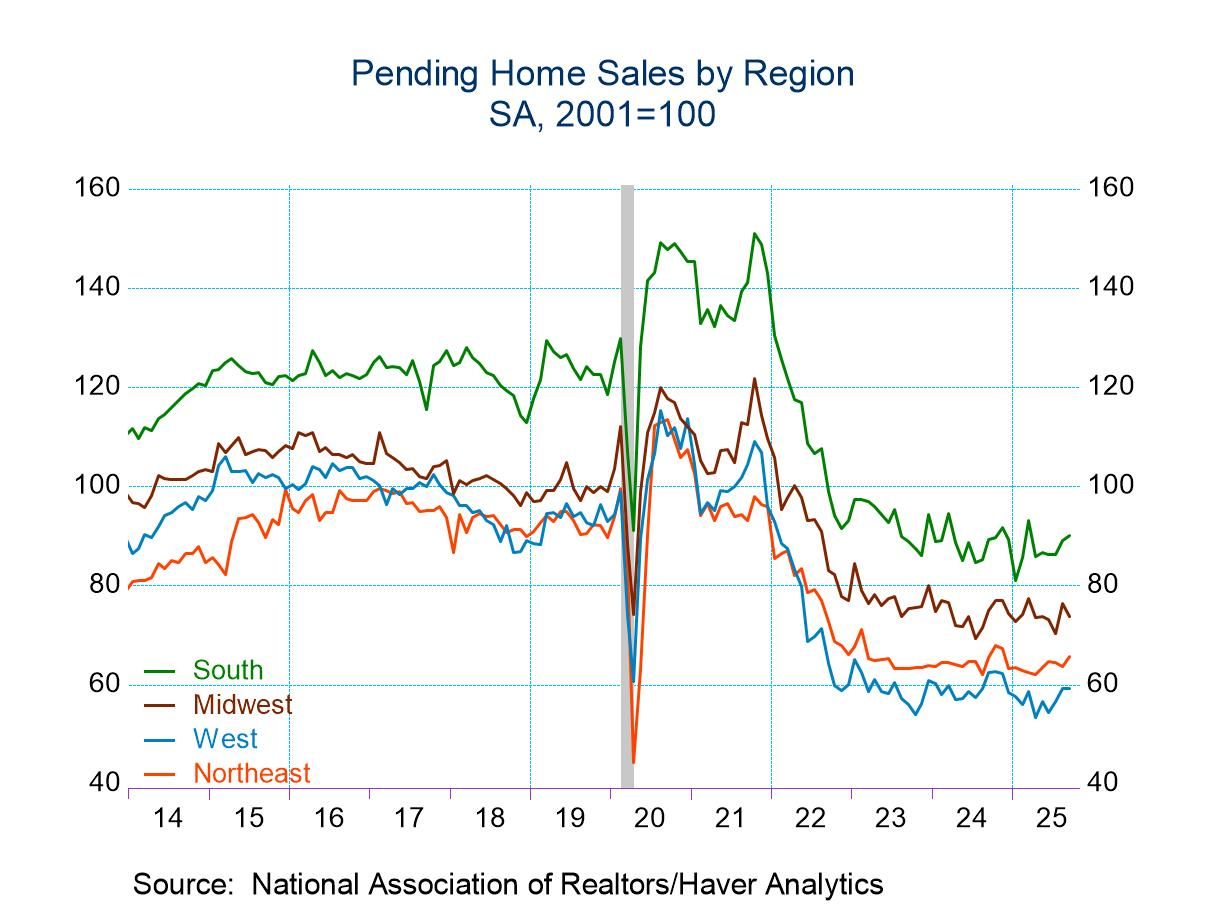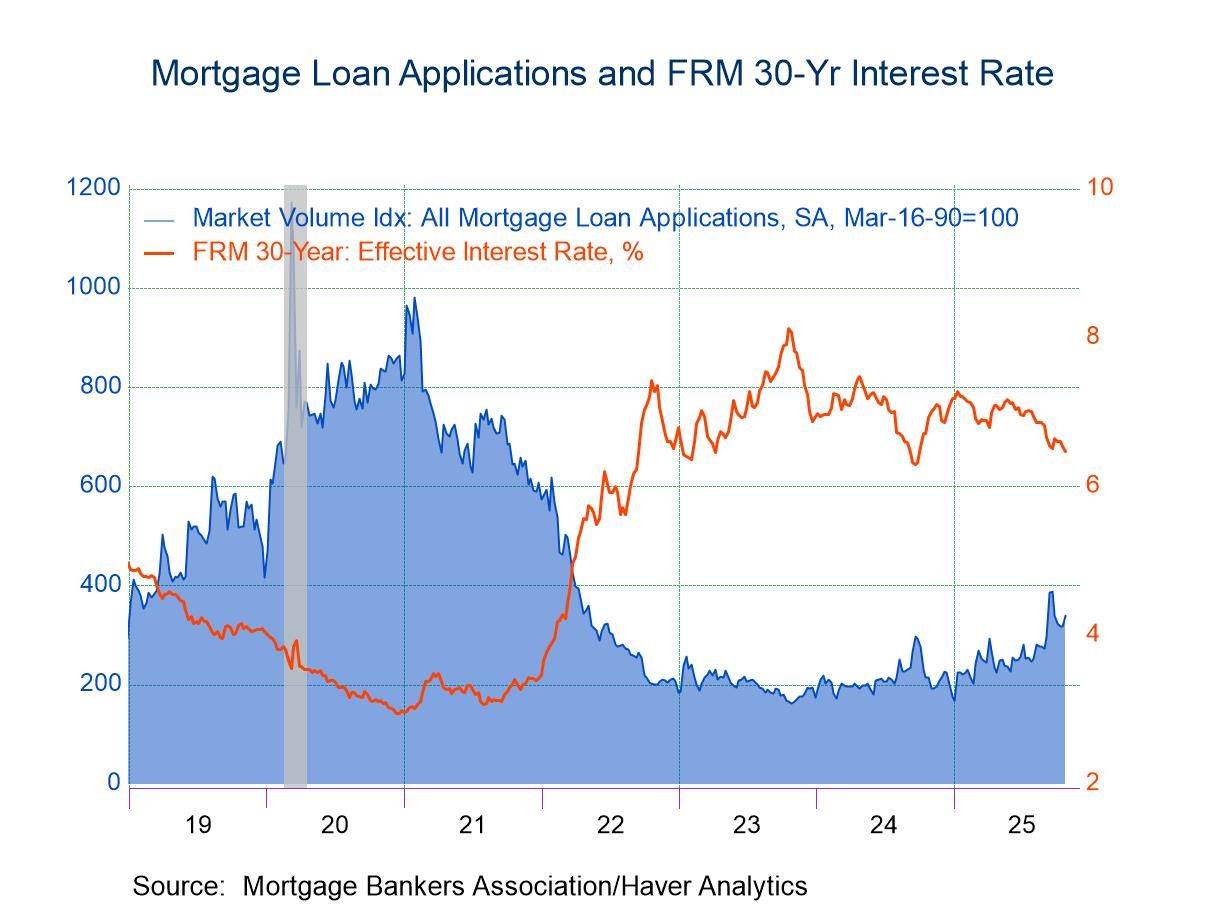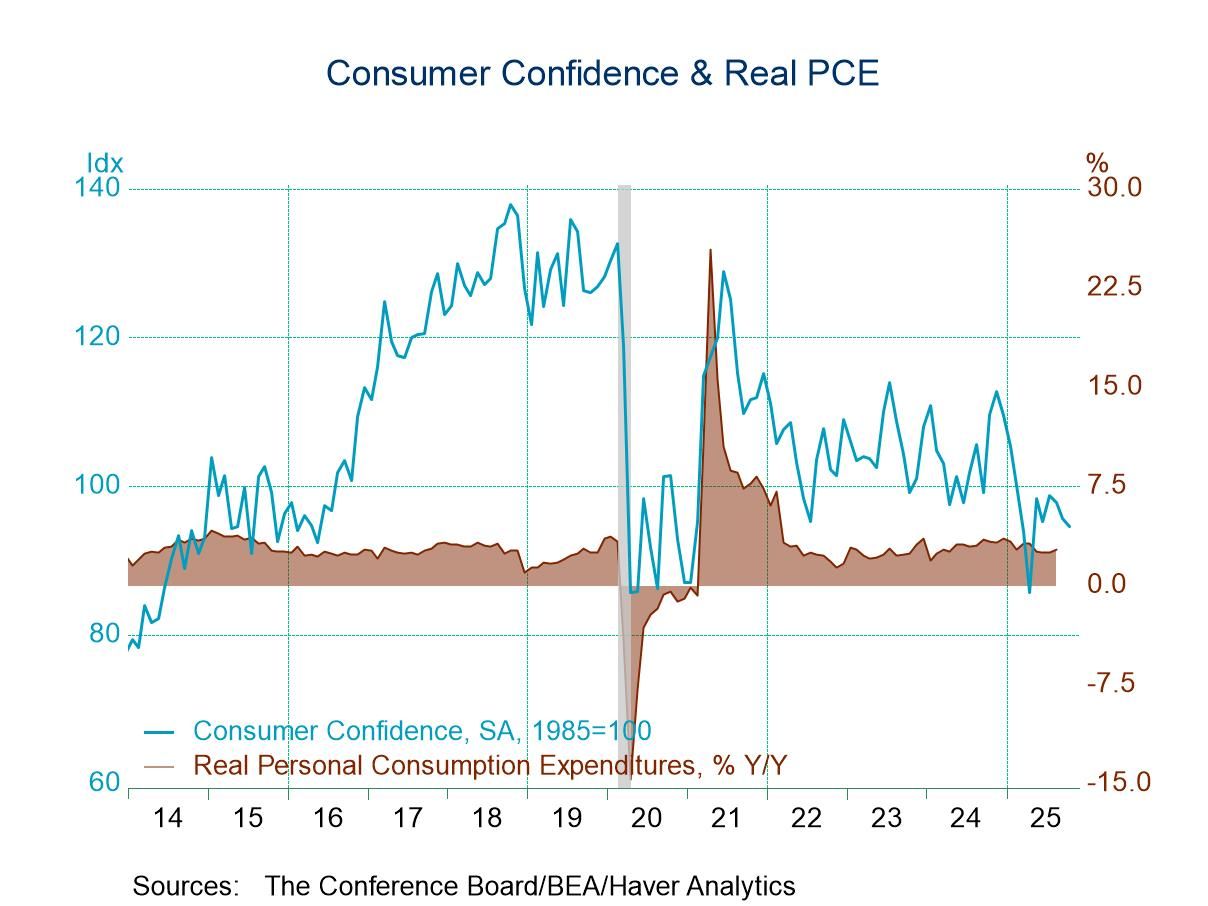 Global| Dec 12 2007
Global| Dec 12 2007U.S. Trade Deficit Deepened Slightly in October
by:Tom Moeller
|in:Economy in Brief
Summary
The U.S. foreign trade deficit deepened slightly to $57.8B from $57.1B in September which was slightly deeper than the deficit initially reported. Consensus expectations had been for a deficit of 57.3B. The deficit averaged $58.7B [...]
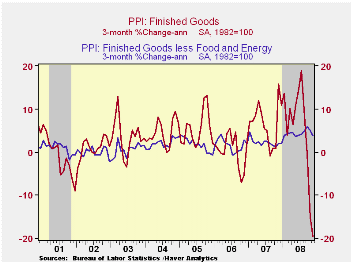
The U.S. foreign trade deficit deepened slightly to $57.8B from $57.1B in September which was slightly deeper than the deficit initially reported. Consensus expectations had been for a deficit of 57.3B.
The deficit averaged $58.7B during the first ten months of this year compared to an average of $64.0B during the first ten months of 2006.
U.S. exports rose 0.9% after a downwardly revised 0.8% during September. he revision was due a slightly lower gain in services exports
Exports of goods rose 0.7% (14.6% y/y) after a 1.4% jump during September. Exports of capital goods surged 3.4% (10.4% y/y) led by a 21.9% pop in exports of civilian aircraft (37.9% y/y. That rise was offset by a 10.4% decline (+5.1% y/y) in exports of computers while exports of electric apparatus rose 2.2% (4.6% y/y) after two months of sharp decline. Exports of nonauto consumer goods also fell by 3.2% +11.1% y/y).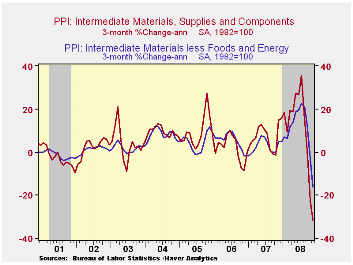
U.S. exports of services rose 1.4% after a decline of 0.5% during September, initially reported as an increase. Travel exports recovered 1.4% (19.4% y/y) and passenger fares surged 2.2% 16.8% y/y).
Overall imports rose 1.0% as higher oil prices pushed up imports of industrial supplies by 3.6% (16.3% y/y). Imports of nonauto consumer goods also rose a firm 1.1% (4.6% y/y) but capital goods imports fell 1.2% (+6.6% y/y) after a 2.1% September jump.
The U.S. trade deficit in goods with China again deteriorated m/m to $25.9B versus a deficit of $24.4B during October of '06. During the first ten months of this year the deficit with China averaged $21.4B versus $19.1B in 2006. Exports to China rose 13.9% y/y and imports rose 7.6%.
Today's announcement by the Federal Reserve of actions by it, and other Central Banks, designed to address elevated pressures in short-term funding markets can be found here.Is the United States Losing Its Productivity Advantage? from the Federal Reserve Bank of New York can be found here.
| Foreign Trade | October | September | Y/Y | 2006 | 2005 | 2004 |
|---|---|---|---|---|---|---|
| U.S. Trade Deficit | $57.8B | $57.1B | $58.2B (10/06) |
$758.5 | $714.4B | $612.1B |
| Exports - Goods & Services | 0.9% | 0.8% | 13.7% | 12.7% | 10.9% | 13.7% |
| Imports - Goods & Services | 1.0% | 0.7% | 9.2% | 10.4% | 12.9% | 16.8% |
Tom Moeller
AuthorMore in Author Profile »Prior to joining Haver Analytics in 2000, Mr. Moeller worked as the Economist at Chancellor Capital Management from 1985 to 1999. There, he developed comprehensive economic forecasts and interpreted economic data for equity and fixed income portfolio managers. Also at Chancellor, Mr. Moeller worked as an equity analyst and was responsible for researching and rating companies in the economically sensitive automobile and housing industries for investment in Chancellor’s equity portfolio. Prior to joining Chancellor, Mr. Moeller was an Economist at Citibank from 1979 to 1984. He also analyzed pricing behavior in the metals industry for the Council on Wage and Price Stability in Washington, D.C. In 1999, Mr. Moeller received the award for most accurate forecast from the Forecasters' Club of New York. From 1990 to 1992 he was President of the New York Association for Business Economists. Mr. Moeller earned an M.B.A. in Finance from Fordham University, where he graduated in 1987. He holds a Bachelor of Arts in Economics from George Washington University.




